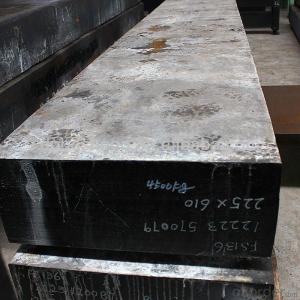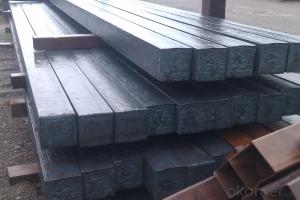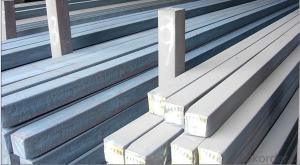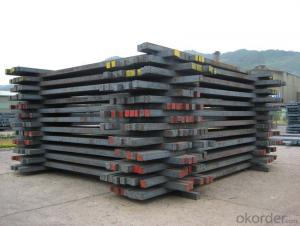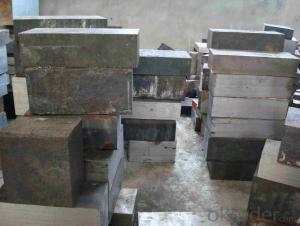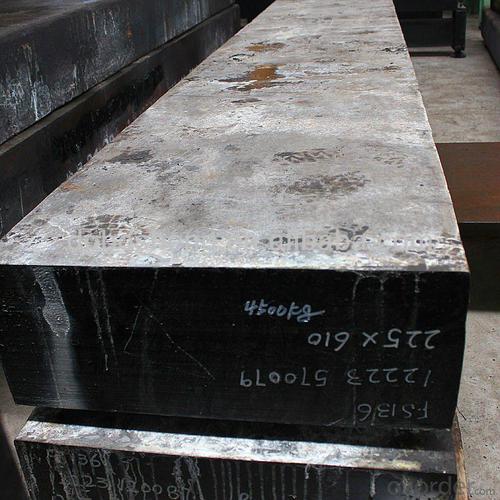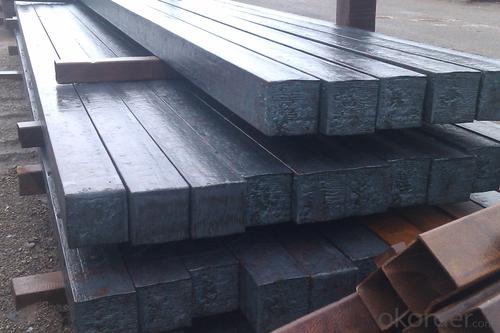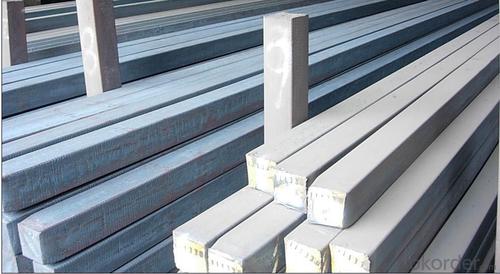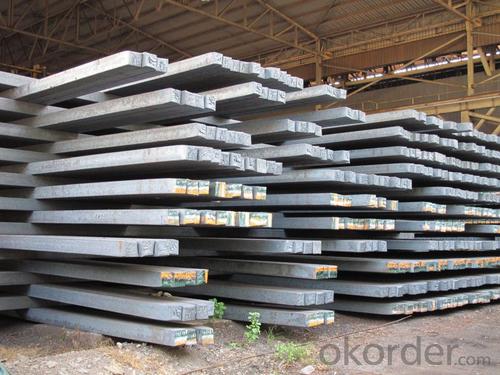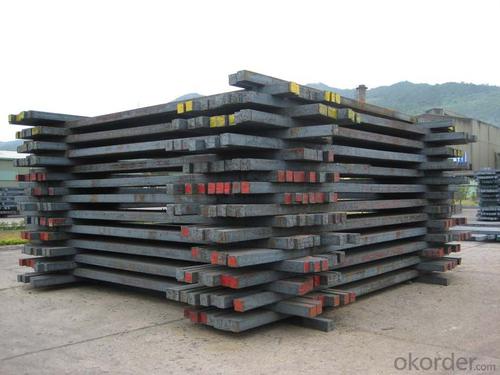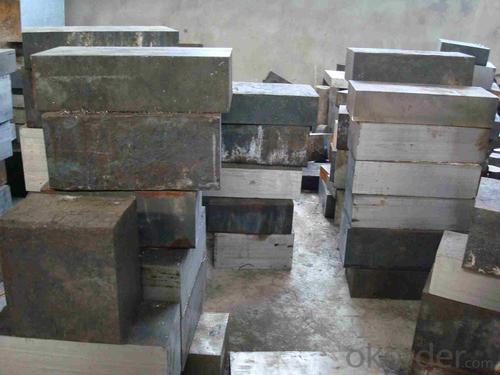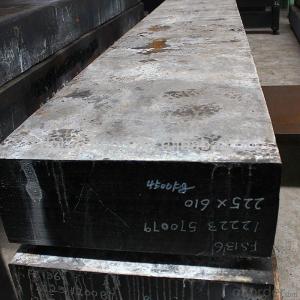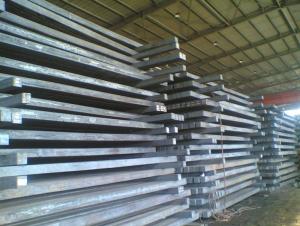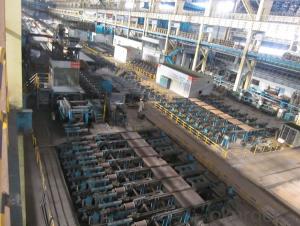Prime quality square alloy steel billet 115mm Q235
- Loading Port:
- Tianjin
- Payment Terms:
- TT OR LC
- Min Order Qty:
- 100 m.t.
- Supply Capability:
- 10000 m.t./month
OKorder Service Pledge
OKorder Financial Service
You Might Also Like
Structure of Prime quality square alloy steel billet 115mm Q235
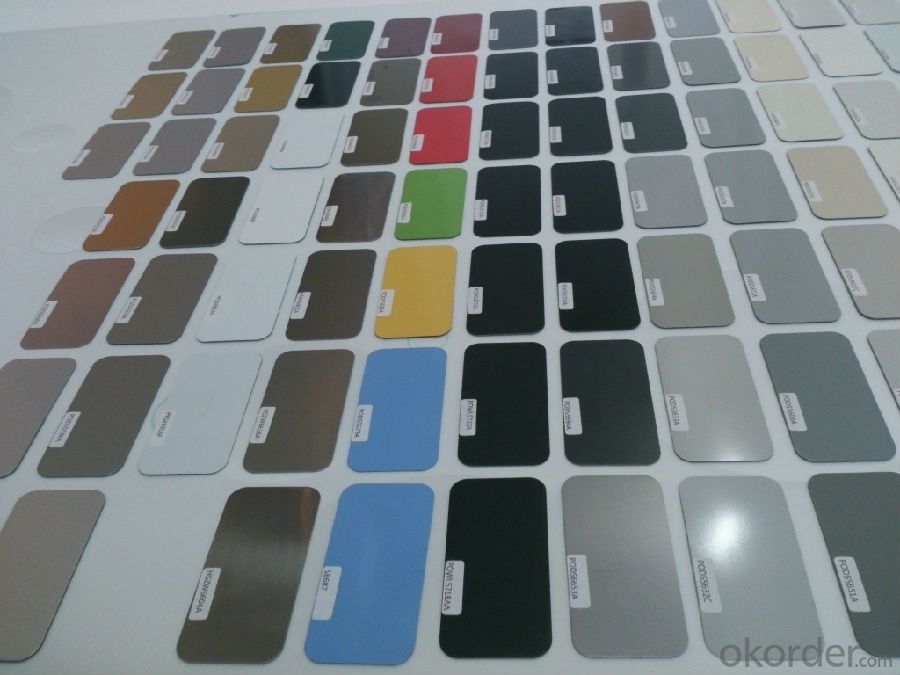
Description of Prime quality square alloy steel billet 115mm Q235
1. Prepainted steel coil is coated with organic layer, which provides higher anti-corrosion property and a longer lifespan than that of galvanized or galvalume steel sheets.
2. The base metals for prepainted steel coil consist of cold rolled, HDGI Steel, electro-galvanized and hot-dip alu-zinc coated steel. The finish coats of prepainted steel coil can be classified into groups as follows: polyester, silicon modified polyesters, polyvinylidene fluoride, high-durability polyester, etc.
3. The production process has evolved from one-coating-and-one-baking to double-coating-and-double-baking, and even three-coating-and-three-baking.
4. The color of the prepainted steel coil has a very wide selection, like orange, cream-colored, dark sky blue, sea blue, bright red, brick red, ivory white, porcelain blue, etc.
5. The prepainted steel coils can also be classified into groups by their surface textures, namely regular prepainted sheets, embossed sheets and printed sheets.

Main Feature of Prime quality square alloy steel billet 115mm Q235
Uncoated CR steel sheet
With the features of in line with the international highest standards in demension and shape, excellent surface finish and properties, the products are mainly used in home appliance and automobile industries.
Galvanized steel sheet(include HDG and EG)
With the features of good corrosion resistance, the products are mainly used in automobile, home appliance, electronics, building and machinery manufacture industries, etc.
Precoated steel sheet
With the features of enviromental protection and good processablility, long lasting surface durability, rich in colors, the products are maily used in building, home appliance and furniture industries, etc.
Applications of Prime quality square alloy steel billet 115mm Q235
Construction
Manufacture anticorrosion, industrial and civil architecture roof boarding, roof grille
Light industries
Home appliance's case, civil chimney, kitchen utensils
Auto industry
Corrosion resistant parts of cars
Agriculture
Food storage, meat and aquatic products' freezing and processing equipment
Commerce
Equipments to store and transport materials, and packing implements

Specifications of Prime quality square alloy steel billet 115mm Q235
Product | Prime quality square alloy steel billet 115mm Q235 |
Material Grade | SGCC / SGCH / DX51D+AZ, etc |
Thickness | 0.6-3.0mm |
Width | 500-1500mm |
Tolerance | Thickness: +/-0.02mm , Width:+/-2mm |
Zinc-coating | Z30-150g/m2 |
Technique | Raw material: Hot rolled steel coil --> Cold rolled_>hot dipped galvalume |
Surface | Dried, Chromated, Unoiled |
Spangle | Regular spangle , small spangle, zero spangle |
ID | 508MM 610MM |
Coil weight | 1-25MT |
Export package | Cardboard inner sleeves, Waterproof paper, galvanized steel covered and steel strip packed |
FAQ of Prime quality square alloy steel billet 115mm Q235
We have organized several common questions for our clients,may help you sincerely:
1. How Can I Visit There?
Our company is located in Tianjin City, China, near Beijing. You can fly to Tianjin Airport Directly. All our clients, from home or aboard, are warmly welcome to visit us!
2. How Can I Get Some Sample?
We are honored to offer you sample.
3. Why choose CNBM?
Our delivery time about 15-20days for standard sizes, if you have other requirements like hardness, quanity and width ,it is about 20-40days. But don't worry we also try our best for the delivery time ,because time longer and our cost is higher.
- Q: What are the potential applications of steel billets in the medical industry?
- The medical industry offers a wide range of potential applications for steel billets. One possibility is their use in the manufacturing of surgical instruments. By shaping and machining the steel billets, they can be transformed into various surgical tools such as scalpels, forceps, and scissors. The strength and durability of steel make it an ideal material for these instruments, ensuring their longevity and reliability during surgical procedures. Another potential application for steel billets in the medical industry is the production of medical implants. Through processing and forming, the steel billets can be turned into implants like joint replacements, spinal implants, and dental implants. The biocompatibility of steel, along with its strength and resistance to corrosion, makes it a suitable material for implants that must withstand the body's environment and provide long-term support. Furthermore, steel billets can be utilized in the construction of medical equipment and machinery. Steel is commonly used in the manufacturing of medical beds, surgical tables, and imaging devices such as MRI machines and X-ray equipment. The structural integrity and stability of steel make it an excellent choice for these applications, ensuring the safety and functionality of medical equipment. Additionally, steel billets can be employed in the production of medical furniture and storage units. Medical facilities often use steel cabinets and shelves to store equipment, supplies, and medications. The strength and durability of steel guarantee that these storage solutions can withstand the demanding conditions of the healthcare environment. In conclusion, the potential applications of steel billets in the medical industry are extensive and varied. From surgical instruments and medical implants to equipment and furniture, steel possesses properties that enhance the quality and effectiveness of healthcare products and facilities.
- Q: How are steel billets used in the manufacturing of pressure vessels?
- Steel billets are used in the manufacturing of pressure vessels as they serve as the raw material for shaping and forming various components such as plates, shells, and heads. These billets are heated and then hot rolled or forged into the desired shape, providing the necessary strength and durability required for pressure vessel construction.
- Q: How do steel billets contribute to the manufacturing of rail and transportation systems?
- Steel billets are an essential raw material in the manufacturing of rail and transportation systems. These billets serve as the starting point for the production of various components, such as rails, wheels, axles, and structural supports. Through a series of processes like rolling, forging, and machining, steel billets are transformed into these vital parts, which provide strength, durability, and stability to rail tracks, locomotives, and other transportation vehicles. In summary, steel billets are crucial in ensuring the reliability and safety of rail and transportation systems.
- Q: Can steel billets be used in the production of railway infrastructure?
- Yes, steel billets can be used in the production of railway infrastructure. Steel billets are semi-finished products that are typically used as raw material in the manufacturing of various steel products. In the case of railway infrastructure, steel billets can be further processed and shaped into different components such as rails, sleepers, and fasteners. Rails, the tracks on which trains run, are usually made from steel billets. These billets are heated and passed through a rolling mill to form the desired rail profile. The resulting rail is then further processed to meet specific requirements such as strength, durability, and resistance to wear and fatigue. Similarly, steel billets can also be used in the production of sleepers, which are the supporting structures that hold the rails in place. Sleepers are typically made from prestressed concrete or steel, and steel billets can be used as the raw material for manufacturing steel sleepers. Additionally, steel billets can be used in the production of various fasteners that are essential for railway infrastructure. These include rail clips, bolts, nuts, and washers, which are used to securely fasten rails to sleepers and other components. Overall, steel billets play a crucial role in the production of railway infrastructure. They provide the necessary raw material for manufacturing rails, sleepers, and fasteners, thereby contributing to the construction and maintenance of railway tracks, bridges, and other essential infrastructure elements.
- Q: What is the role of steel billets in the automotive industry?
- Steel billets play a crucial role in the automotive industry as they are used as the primary raw material for manufacturing various components and parts of vehicles. These billets are transformed into different shapes and sizes through processes like forging, rolling, and machining to create engine parts, chassis components, axles, and other structural elements. With their strength, durability, and versatility, steel billets enable the automotive industry to produce high-quality and reliable vehicles, ensuring safety and performance for drivers and passengers.
- Q: What is the typical density of a steel billet?
- The typical density of a steel billet is approximately 7.8 grams per cubic centimeter (g/cm³).
- Q: Can steel billets be used in the aerospace industry?
- Yes, steel billets can be used in the aerospace industry. Steel billets are often used as raw material for manufacturing various aerospace components such as engine parts, landing gear, and structural components due to their high strength, durability, and ability to withstand extreme operating conditions. However, the specific application and grade of steel billets used in the aerospace industry may vary depending on the required mechanical properties and performance criteria.
- Q: What are the different surface finishes available for alloy steel billets?
- There are several different surface finishes available for alloy steel billets, depending on the specific requirements and applications. Some of the common surface finishes include: 1. Hot rolled: This is the most common surface finish for alloy steel billets. It is achieved by rolling the steel billet at a high temperature, which results in a rough and scaled surface. 2. Cold drawn: This surface finish is achieved by pulling the steel billet through a die at room temperature. It provides a smooth and polished surface, with improved dimensional accuracy and surface quality. 3. Peeled: In this process, a layer of material is removed from the surface of the steel billet using a peeling tool. It results in a smooth and shiny surface finish, with improved surface quality and dimensional accuracy. 4. Ground: This surface finish is achieved by grinding the surface of the steel billet using abrasive wheels or belts. It provides a smooth and uniform surface finish, with improved surface quality and dimensional accuracy. 5. Turned: In this process, the steel billet is rotated against a cutting tool, which removes material from the surface and creates a smooth and polished finish. It is commonly used for high precision applications where a smooth surface finish is required. 6. Polished: This surface finish is achieved by polishing the steel billet using abrasive compounds and buffing wheels. It provides a mirror-like finish, with improved aesthetic appeal and corrosion resistance. It is important to select the appropriate surface finish based on the specific requirements of the application, such as dimensional accuracy, surface quality, aesthetic appeal, and corrosion resistance.
- Q: How do steel billets contribute to the infrastructure development sector?
- Steel billets play a crucial role in the infrastructure development sector by serving as the foundation for various construction projects. These billets are used to produce structural steel products, such as beams, columns, and reinforcement bars, which are essential components in building bridges, highways, buildings, and other infrastructure projects. The strength and durability of steel billets make them ideal for withstanding heavy loads and adverse weather conditions, ensuring the long-term stability and safety of structures. Moreover, their versatility allows for easy fabrication and customization, enabling engineers and architects to design innovative and efficient solutions for infrastructure development. Overall, steel billets provide the necessary strength, reliability, and flexibility to support the growth and sustainability of the infrastructure development sector.
- Q: How are steel billets inspected for quality?
- Steel billets are typically inspected for quality using various non-destructive testing methods such as visual inspection, ultrasonic testing, magnetic particle inspection, and dye penetrant testing. These tests help identify any surface defects, cracks, or internal flaws in the billets, ensuring that they meet the required quality standards before further processing.
Send your message to us
Prime quality square alloy steel billet 115mm Q235
- Loading Port:
- Tianjin
- Payment Terms:
- TT OR LC
- Min Order Qty:
- 100 m.t.
- Supply Capability:
- 10000 m.t./month
OKorder Service Pledge
OKorder Financial Service
Similar products
Hot products
Hot Searches
Related keywords
